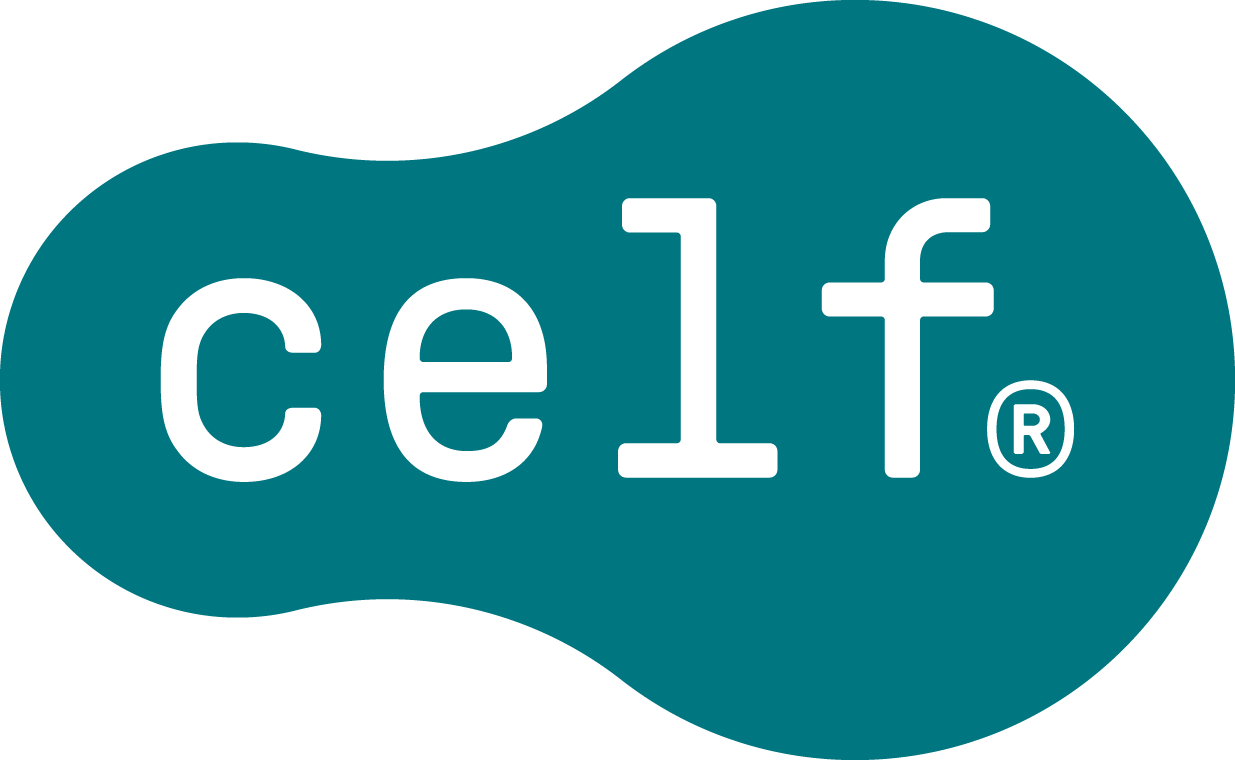What is Collagen Banking & Should You Start in Your 30s?
Table of Contents
Collagen banking is one of the most talked-about trends in preventative skincare. Simply put, it’s about taking action early to stimulate and preserve collagen, supporting firmer, more radiant-looking skin as you age. For those stepping into their 30s, this concept can feel both timely and empowering, because this is exactly when collagen decline becomes noticeable.
In this article, we’ll explore what collagen does, how collagen banking works, why your 30s are the best time to start, and how CELF Microvibration Therapy can be a game-changing addition to your skincare routine.
What Does Collagen Actually Do for Your Skin?
How does collagen work in skin structure?
Collagen is the most abundant structural protein in the human body. In the skin, it forms a supportive framework, maintaining firmness, elasticity, and hydration. Collagen is made by specialised skin cells, which help keep skin looking smooth and supported. Think of collagen as scaffolding: without it, skin loses structure, leading to sagging, fine lines, and dullness.
At what age does natural collagen production start to decline?
Scientific research shows that collagen production begins to decline as early as 25. Dermatologists note that collagen levels naturally begin to decline from the mid-20s, and this gradual loss can become more noticeable in the 30s. This decline is accelerated by UV exposure, pollution, stress, and lifestyle habits. Dermatologists distinguish between intrinsic ageing (natural biological slowdown) and extrinsic ageing (environmental damage), both of which erode collagen over time.
💡 Want to support your skin’s collagen levels naturally? Discover how CELF uses gentle vibrations designed to support skin’s natural processes and improve circulation.
What Is Collagen Banking, and How Does It Work?
What is the definition of collagen banking?
Despite its name, collagen banking doesn’t involve storing collagen in a literal 'bank'. Instead, it’s a preventative approach that focuses on stimulating collagen production and protecting existing reserves. Similar to wearing SPF to prevent sun damage, 'collagen banking' means strengthening your skin before significant ageing sets in.
Is it possible to preserve or 'bank' collagen?
While we can’t stop natural decline, skincare, lifestyle, and non-invasive tools may help support skin’s firmness over time. Preventative skincare, lifestyle shifts, and advanced technologies can significantly delay visible ageing. This approach aligns with the growing dermatological trend of 'prejuvenation', where people proactively prevent early skin damage rather than treating it later.
What methods are used for collagen banking today?
-
Retinoids (stimulate cell turnover)
-
Microneedling (induces micro-injury for collagen remodelling)
-
Radiofrequency (RF) therapy
-
Facial massage and lymphatic drainage
-
CELF Microvibration Therapy (gentle, non-invasive fibroblast stimulation using low-frequency vibration)
💡 Unlike invasive procedures, CELF uses gentle vibrations, which may support the skin’s appearance and help it look firmer, with no downtime. Learn how it works.
Why Should You Start Collagen Banking in Your 30s?
What happens to collagen in your 30s?
By your 30s, you’re already losing about 1% of collagen each year. Stress, UV exposure, poor sleep, and environmental toxins only accelerate the process. This is when you may notice fine lines, dullness, or thinner skin for the first time.
Can collagen loss in your 30s be reversed?
While lost collagen cannot be fully restored, consistent stimulation can encourage new collagen formation. Non-invasive therapies like CELF enhance the skin’s natural ability to repair and regenerate, offering long-term benefits when integrated into daily routines.
What are the long-term benefits of starting collagen banking early?
-
Smoother, firmer skin into your 40s and 50s
-
Stronger baseline for future treatments
-
Delay in needing more aggressive procedures like fillers or lifts
💡 Help support your skin for the future. Start collagen banking with CELF for visible firmness and radiance.
How Does CELF Fit Into a Collagen Banking Routine?
What makes CELF Microvibration Therapy different?
CELF uses the advanced Oral-B iO engine to deliver precise low-frequency vibrations through a Patented non invasive head . This helps stimulate fibroblasts, boosts circulation, and enhances topical serum penetration—without needles or downtime.
How does vibration therapy increase collagen production?
Gentle vibrations can encourage skin activity, which some studies suggest may help improve circulation and skin appearance.
How should CELF be used in a collagen banking regimen?
-
Use daily with a hydrating serum (e.g., hyaluronic acid).
-
Follow with SPF to protect new collagen.
-
Incorporate intoyour evening ready for bed routine after brushing your teeth
💡 Tip: Use CELF with your favourite serum every day to maximise absorption and boost collagen—naturally.
What Skincare Ingredients Optimise Collagen Banking?
Which active ingredients support collagen production topically?
-
Vitamin C: Stimulates collagen synthesis
-
Retinol: speeds up cellular turnover
-
Peptides: Signal the skin to produce more collagen
-
Hyaluronic acid: Hydrates and plumps the skin matrix
What ingredient combinations work best with CELF?
The microvibrations from CELF increase absorption, allowing actives to penetrate more effectively. Pairing it with vitamin C, peptides, or hyaluronic acid maximises collagen support.
💡 Explore compatible collagen-boosting serums recommended for use with CELF.
How Do You Know If Collagen Banking Is Working?
What visible changes should you expect?
Some people notice skin feeling smoother, firmer, or looking more radiant after regular use.
How long does it take to see results?
Skin renewal naturally takes a few weeks, so visible changes may take time and vary from person to person.
💡 See what others are saying. Explore CELF user stories and transformations.
What Lifestyle Factors Affect Your Collagen Reserves?
Can sun exposure undo your collagen banking efforts?
Yes. UV radiation is the number one collagen destroyer. Daily sunscreen is non-negotiable, even when indoors or on cloudy days.
Does sleep impact collagen production?
Deep sleep increases growth hormone, which aids collagen repair. Research shows that poor sleep reduces skin recovery and accelerates ageing.
What foods promote natural collagen production?
-
Collagen-rich: bone broth, salmon, eggs
-
Vitamin C-rich: citrus, berries, peppers
-
Zinc and antioxidant-rich: nuts, leafy greens
💡 Pair CELF therapy with collagen-smart lifestyle habits for amplified results.
Is Collagen Banking Safe and Scientifically Supported?
What does clinical research say about collagen stimulation therapies?
Studies confirm the effectiveness of non-invasive collagen stimulation techniques. Evidence also supports vibration therapy as a safe way to activate fibroblasts and improve circulation.
Are there any risks with vibration-based collagen therapy?
CELF is designed to be suitable for most skin types, but anyone with concerns should consult a professional before use.
💡 Trusted by professionals. Loved by skin. Try CELF risk-free today.
FAQ – What Do People Want to Know About Collagen Banking?
Q: At what age should I start collagen banking?
Ideally mid-20s, but 30s is the sweet spot.
Q: Can men benefit from collagen banking, too?
Absolutely—collagen decline affects all genders.
Q: Can I use CELF with exfoliants?
Yes, but alternate days to avoid irritation.
Q: Is collagen banking a replacement for Botox or fillers?
No, it’s preventative, not corrective.
Q: How often should I do CELF therapy?
Daily evening use is recommended.
Q: Is collagen banking expensive?
CELF offers a non-invasive option that can be used at home, making it an alternative to more intensive in-clinic treatments.
✅ Ready to Begin Collagen Banking? Start with CELF Today →




